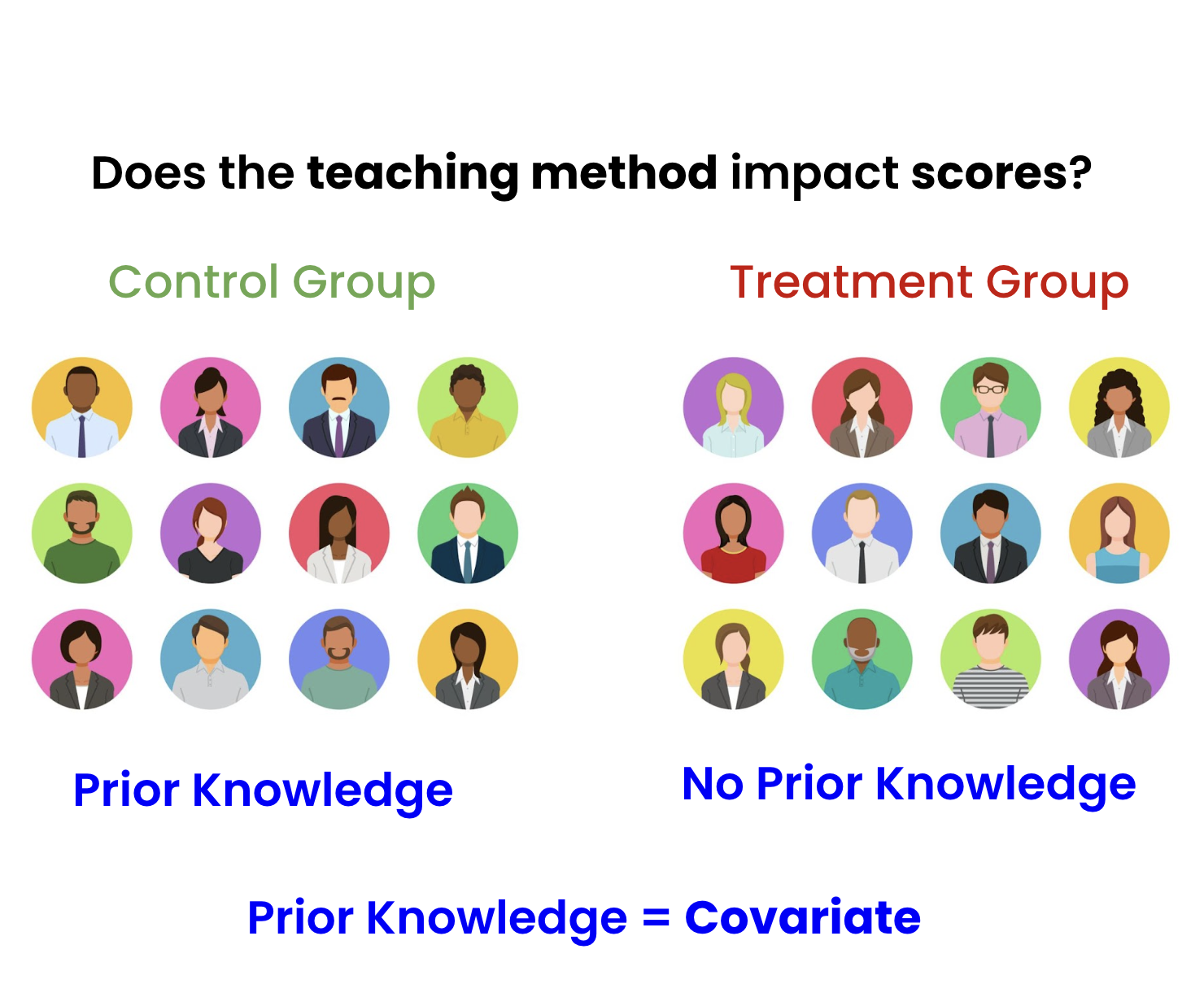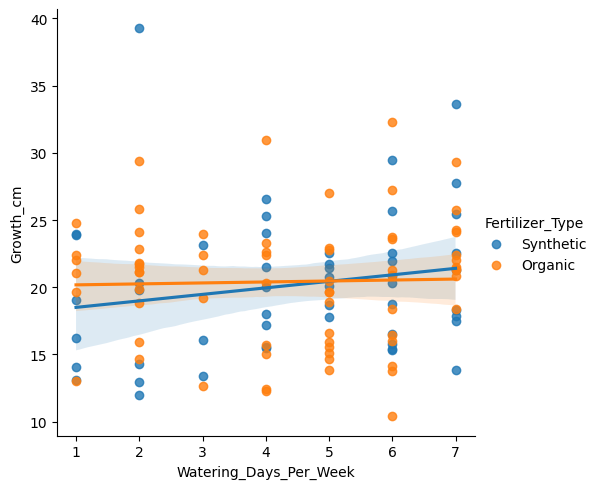Covariate adjustment in experimental design
Experimental Design in Python

James Chapman
Curriculum Manager, DataCamp
Introduction to covariates
- Covariates: potentially affect experiment results but aren't primary focus
- Importance in reducing confounding
- Impact on precision and validity of results
- Example: Impact of teaching method on test scores

Experimental data example
exp_plant_data = plant_growth_data[['Plant_ID', 'Fertilizer_Type', 'Growth_cm']]
Plant_ID Light_Condition Fertilizer_Type Growth_cm
0 1 Full Sunlight Synthetic 16.489735
1 2 Partial Shade Organic 18.361689
2 3 Full Sunlight Synthetic 18.039459
3 4 Full Sunlight Organic 12.682425
4 5 Full Sunlight Organic 21.480601
Covariate data example
covariate_data
Plant_ID Watering_Days_Per_Week
0 1 6
1 2 6
2 3 4
3 4 3
4 5 7
Combining experimental data with covariates
merged_plant_data = pd.merge(exp_plant_data, covariate_data, on='Plant_ID')
Plant_ID Fertilizer_Type Growth_cm Watering_Days_Per_Week
0 1 Synthetic 16.489735 6
1 2 Organic 18.361689 6
2 3 Synthetic 18.039459 4
3 4 Organic 12.682425 3
4 5 Organic 21.480601 7
Adjusting for covariates
from statsmodels.formula.api import olsmodel = ols('Growth_cm ~ Fertilizer_Type + Watering_Days_Per_Week', data=merged_plant_data).fit()model.summary()
OLS Regression Results
==============================================================================
Dep. Variable: Growth_cm R-squared: 0.011
Model: OLS Adj. R-squared: -0.006
Method: Least Squares F-statistic: 0.6370
No. Observations: 120 Prob (F-statistic): 0.531 <---
Df Residuals: 117 Log-Likelihood: -360.45
Df Model: 2 AIC: 726.9
Covariance Type: nonrobust BIC: 735.3
==============================================================================
Further exploring ANCOVA results
coef std err t P>|t| [0.025 0.975]
<hr />-----------------------------------------------------------------------------------------------------
Intercept 19.3373 1.150 16.820 0.000 17.060 21.614
Fertilizer_Type[T.Synthetic] -0.2796 0.913 -0.306 0.760 <-- -2.088 1.528
Watering_Days_Per_Week 0.2507 0.229 1.097 0.275 <-- -0.202 0.703
===========================================================================================================
Omnibus: 14.446 Durbin-Watson: 1.992
Prob(Omnibus): 0.001 Jarque-Bera (JB): 18.267
Skew: 0.675 Prob(JB): 0.000108
Kurtosis: 4.352 Cond. No. 13.3
==================================================================================
Visualizing treatment effects with covariate adjustment
import seaborn as sns
import matplotlib.pyplot as plt
sns.lmplot(x='Watering_Days_Per_Week',
y='Growth_cm',
hue='Fertilizer_Type',
data=merged_plant_data)
plt.show()

Let's practice!
Experimental Design in Python

